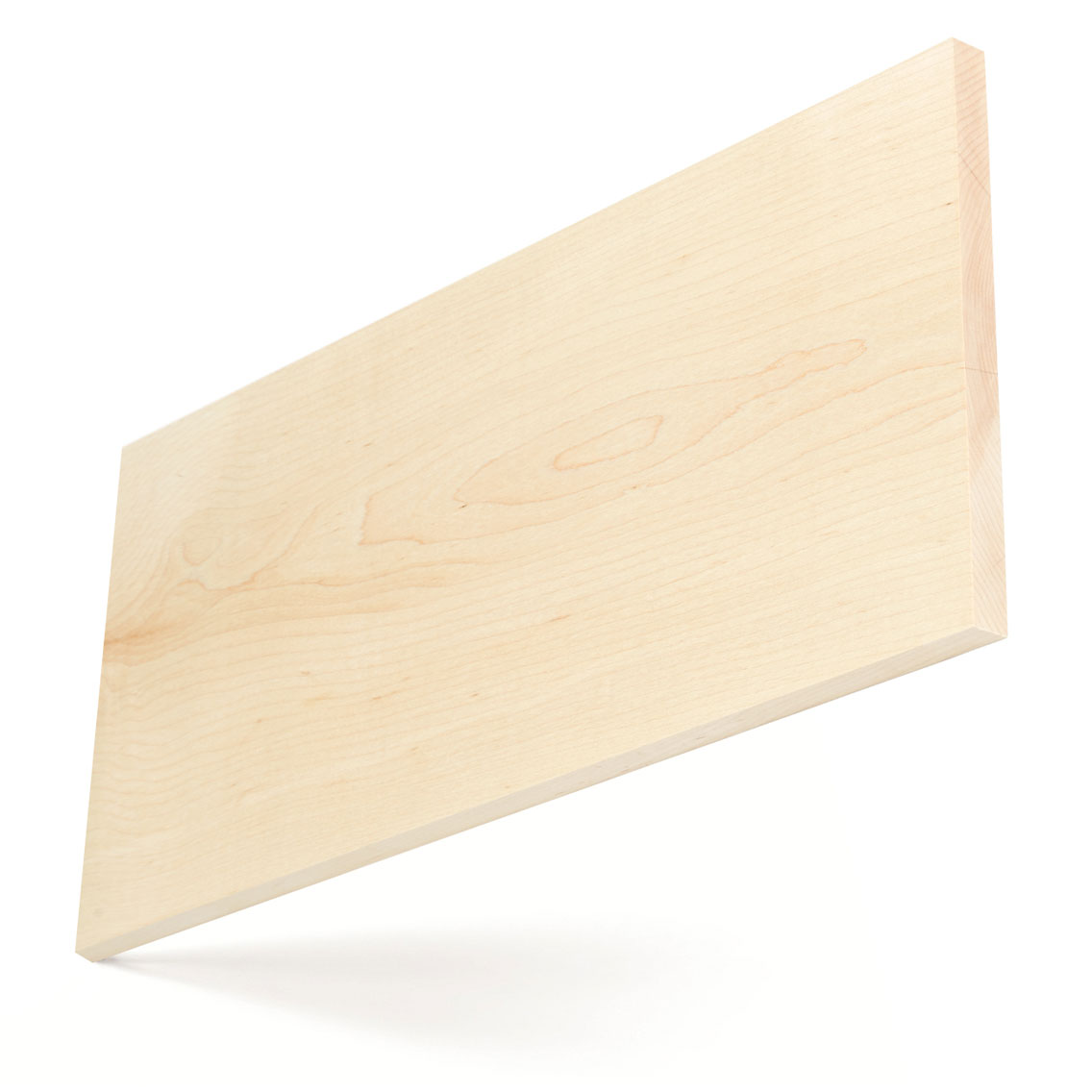American hard maple
American hard maple, growing naturally in the hardwood forests of North America, is world-renowned for its delicate colour, hardness, fine grain and finishing quality.
Latin Name
Acer saccharum, Acer nigrum
Other Common Names
sugar maple, rock maple, black maple

Forest Distribution
American hard maple is a cold climate species, although trees can grow throughout the USA in mixed hardwood forests, but favour the more northern states. The species is quite different from other maples throughout the world. The trees often grow in dense stands on many types of soil and are also farmed for their famous maple syrup. Harvesting the trees is seasonal (autumn and winter).
FOREST GROWTH
FIA data shows U.S. hard maple growing stock is 953.7 million m3, 6.6% of total U.S. hardwood growing stock. American hard maple is growing 19.1 million m3 per year while the harvest is 10.2 million m3 per year. Net volume (after harvest) is increasing 8.8 million m3 each year. U.S. hard maple growth exceeds harvest in all major supplying states except Maine. In Maine maple harvests have been high relative to growth, mainly due to increased extraction for pulpwood and bioenergy supplies, and because maple-dominated hardwood forests are slowly being replaced by softwood forest types.
LCA Tool
seconds
Material Availability
- Hard maple from the USA is readily available as sawn lumber in a range of grades and sizes and as veneer. Lumber is regularly produced in 4/4" through to 8/4" but limited as thicker stock.
- The lumber may be sold according to (white) colour selection, for which a premium is normally charged. This is usually done using the NHLA grading standard for colour sorting producing colour grades such as "1&2 white". Consultation with suppliers is recommended.
Wood Description
- The sapwood of hard maple is normally creamy white but can show a slight reddish/brown tinge. White sapwood lumber can be selected and veneer is always selected. The heartwood of hard maple varies in colour from light to dark reddish brown and may also vary according to region. The difference between heart and sap colour may only be slight. Both may contain pith fleck as a natural characteristic.
- The wood of hard maple has a close fine texture and is generally straight grained. Hard maple can occur as 'curly', 'fiddleback' and 'birds eye' figure. The wood darkens on exposure to light with time.
Mechanical Properties
Hard maple is hard, as the name suggests, and is heavy with good strength properties. It has high resistance to abrasion and wear as well as good steam bending properties. Accordingly it is a preferred species for flooring, including sports floors, bowling alleys and worktops.
-
0.63
Specific Gravity (12% M.C.)
705 kg/m3
Average Weight (12% M.C.)
11.90%
Average Volume Shrinkage (Green to 6% M.C.)
108.941 MPa
Modulus of Rupture
12,618 MPa
Modulus of Elasticity
53.988 MPa
Compressive strength (parallel to grain)
6,450 N
Hardness
Oiled / Un-Oiled Appearance


Performance
- Hard maple lumber is excellent to machine, bore, turn and finish. It glues, planes, drills and carves well but screwing and nailing is only fair. It produces good mouldings. Hard maple can easily be sanded, stained and polished to a very fine and smooth finish.
- The heartwood is only slightly or non-resistant to decay and the heartwood is resistant to preservative treatment. The sapwood is permeable.
Main Uses
This sustainably managed wood from natural forests of North America, with excellent environmental credentials, is revered worldwide for its hardwearing property, delicate light colour and fine finish. It is highly suitable for all types of flooring, including high traffic areas such as public buildings, furniture, cabinet making and high-class joinery. It is widely used for table and work tops, mouldings, and kitchen cabinets.